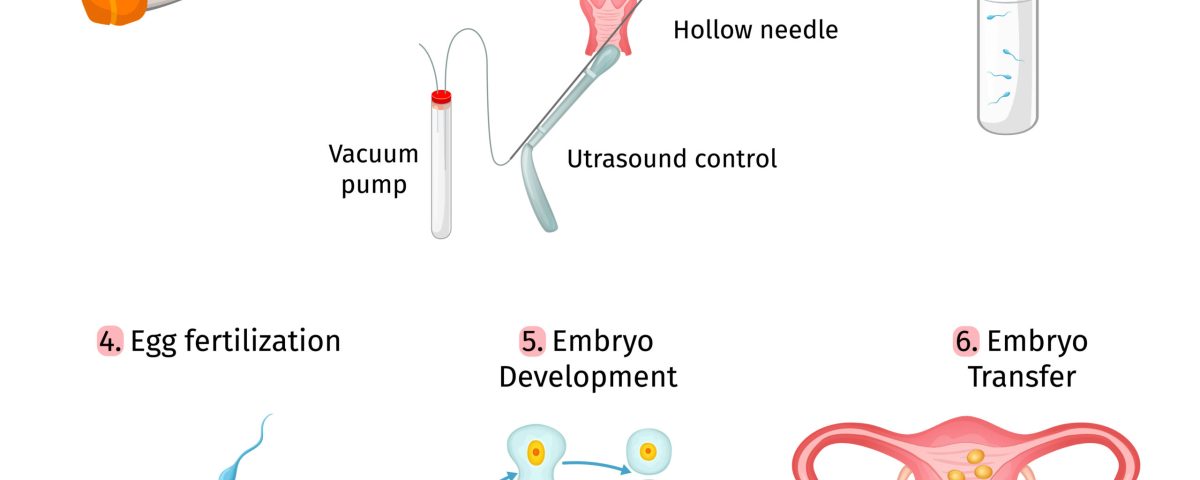
How to Make IVF Successful the First Time
April 24, 2025
Is the Catholic Church Against IVF?
April 24, 2025What Does IVF Do? Your Guide to Understanding In Vitro Fertilization
In vitro fertilization, or IVF, is a term you might’ve heard thrown around in conversations about starting a family. Maybe a friend mentioned it, or you’ve seen it pop up in a TV show. But what does IVF actually do? At its core, IVF is a way to help people have a baby when nature needs a little nudge. It’s not magic, but it can feel pretty close to it for those who’ve struggled to get pregnant. This article dives deep into how IVF works, who it’s for, what to expect, and some fresh insights you won’t find everywhere else. Whether you’re curious, considering it, or just want to understand it better, you’re in the right place.
Let’s break it down together and explore how this incredible process opens doors to parenthood.
The Basics: How IVF Brings Eggs and Sperm Together
IVF stands for “in vitro fertilization,” which is just a fancy way of saying “fertilization in a lab.” Normally, when someone gets pregnant, an egg and sperm meet up inside the body, in the fallopian tubes. The fertilized egg then travels to the uterus, settles in, and grows into a baby. But sometimes, that meeting doesn’t happen naturally—maybe because of blocked tubes, low sperm count, or other roadblocks. That’s where IVF steps in.
Here’s the simple version of what IVF does: doctors take eggs from the ovaries, mix them with sperm in a lab dish, and then place the resulting embryo (a fertilized egg) into the uterus. If everything goes well, that embryo grows into a baby. It’s like giving nature a helping hand by skipping some of the tricky parts.
Think of it like baking a cake. Normally, you’d mix the ingredients in your kitchen (the body), but with IVF, a chef (the doctor) mixes them in a special lab oven before putting the batter (the embryo) back into your oven (the uterus) to bake. Pretty cool, right?
Why IVF Is a Game-Changer
IVF doesn’t just help one type of person—it’s a lifeline for all kinds of situations. Couples with infertility, single parents, same-sex couples, and even people who want to avoid passing on genetic conditions can turn to IVF. It’s been around since 1978, when the first “test-tube baby,” Louise Brown, was born in England. Since then, over 8 million babies have come into the world thanks to IVF. That’s a lot of birthday parties!
Who Can IVF Help? More Than You Might Think
IVF isn’t just for one group—it’s a tool for anyone facing hurdles on the road to parenthood. Let’s look at some of the people who might use it and why.
Couples Struggling with Infertility
If you’ve been trying to get pregnant for a year (or six months if you’re over 35) without luck, infertility might be the issue. IVF can help when:
- Fallopian tubes are blocked or damaged: Sperm can’t reach the egg, so IVF bypasses the tubes entirely.
- Sperm isn’t up to the job: Low count or poor movement? IVF can use just a few good ones—or even one, with a technique called ICSI (intracytoplasmic sperm injection).
- Ovulation isn’t happening: If eggs aren’t being released, IVF can stimulate the ovaries to produce them.
About 1 in 8 couples in the U.S. deal with infertility, so it’s more common than you might think. IVF gives them a shot at building the family they’ve been dreaming of.
Single Parents and Same-Sex Couples
IVF isn’t just for traditional couples. Single women can use donor sperm, and same-sex female couples can use a process called reciprocal IVF, where one partner’s eggs are fertilized and implanted in the other. Male couples might pair IVF with a surrogate. It’s all about making parenthood possible, no matter your situation.
Avoiding Genetic Problems
Got a family history of something like cystic fibrosis? IVF can team up with preimplantation genetic testing (PGT) to check embryos for issues before they’re implanted. It’s like picking the healthiest apples from the tree to ensure a strong start.
Fertility Preservation
Some people use IVF to “freeze” their future. If you’re facing cancer treatment or just want to delay having kids, you can freeze eggs or embryos now and use them later. It’s a way to keep your options open.
Step-by-Step: What Happens During IVF?
IVF isn’t one quick procedure—it’s a journey with several steps. Each one is designed to boost your chances of success. Here’s what it looks like, broken down so it’s easy to follow.
Step 1: Boosting Egg Production
First, you’ll take fertility drugs to tell your ovaries to make more eggs than usual. Normally, you release one egg a month, but IVF aims for a bunch—think 10 or more. More eggs mean more chances for a healthy embryo.
- How it works: You’ll inject hormones for about 10-14 days. Doctors check your progress with ultrasounds and blood tests.
- What to expect: Some bloating or mood swings might pop up, but it’s temporary.
Step 2: Collecting the Eggs
Once the eggs are ready, a doctor retrieves them in a minor procedure. You’ll be under light sedation, so it’s not painful—just a little weird to think about!
- How it’s done: A thin needle goes through the vaginal wall into the ovaries to scoop up the eggs.
- Fun fact: This takes about 20 minutes, and you’re usually home the same day.
Step 3: Fertilizing the Eggs
In the lab, the eggs meet the sperm. Sometimes they’re just mixed together; other times, a single sperm is injected into an egg (ICSI). After a day or two, you’ve got embryos—tiny beginnings of life.
Step 4: Growing the Embryos
The embryos chill in the lab for 3-5 days, growing stronger. Doctors watch them to pick the best ones for transfer. Any extras can be frozen for later.
Step 5: Transferring the Embryo
A doctor uses a thin tube to place one or two embryos into your uterus. It’s quick, like a Pap smear, and no sedation is needed. If an embryo sticks to the uterine lining, pregnancy begins!
Step 6: The Waiting Game
About two weeks later, a blood test checks if you’re pregnant. This part’s tough—nerve-wracking but exciting.
Here’s a quick visual to sum it up:
| Step | What Happens | Timeframe |
|---|---|---|
| Egg Boosting | Hormones ramp up egg production | 10-14 days |
| Egg Retrieval | Eggs are collected from ovaries | 20-30 minutes |
| Fertilization | Eggs + sperm = embryos | 1-2 days |
| Embryo Growth | Embryos develop in the lab | 3-5 days |
| Transfer | Embryos go into the uterus | 5-10 minutes |
| Pregnancy Test | Check if it worked | 2 weeks later |
What Makes IVF Work? The Science Behind the Scenes
IVF isn’t guesswork—it’s backed by decades of research. Let’s peek at what’s happening under the hood.
Hormones Are the MVPs
Those fertility drugs? They’re hormones like FSH (follicle-stimulating hormone) and LH (luteinizing hormone). They trick your ovaries into thinking it’s time to produce a whole team of eggs instead of just one. A 2022 study in Reproductive Sciences showed that tweaking these hormones can increase egg yield by up to 20% in some cases.
Timing Is Everything
Doctors use ultrasounds to measure follicles (the sacs holding eggs). When they hit about 14-20 millimeters, the eggs inside are mature and ready to go. Miss the window, and the eggs might not be viable.
Lab Magic
In the lab, embryologists are like matchmakers. They use high-tech tools to ensure sperm and eggs connect. With ICSI, they can even pick one superstar sperm to guarantee fertilization—pretty amazing for cases where sperm quality is low.
Does IVF Always Work? Success Rates and Real Talk
IVF isn’t a sure thing, and that’s okay to talk about. Success depends on a few factors, like age, health, and even luck. Here’s what the numbers say, based on 2021 data from the Society for Assisted Reproductive Technology:
- Under 35: About 45% of cycles lead to a live birth.
- 35-37: Drops to 32%.
- 38-40: Around 20%.
- Over 42: Less than 3%.
Age matters because egg quality declines over time. But don’t let that discourage you—IVF still beats the odds for many. For example, a 38-year-old might have a 1% chance naturally but a 20% shot with IVF. That’s a big jump!
What Boosts Your Odds?
✔️ Healthy lifestyle: Eat well, skip smoking, and manage stress. A 2023 study linked better diets to a 15% higher IVF success rate.
✔️ Top-notch clinic: Pick one with good stats and experience.
✔️ Fresh or frozen?: Frozen embryo transfers often have higher success rates (up to 50% in some groups) because the uterus gets a break before implantation.
❌ Don’t rush: Skipping rest or overdoing meds can backfire.
❌ Avoid stress overload: It won’t ruin everything, but it doesn’t help.
Interactive Check-In: What’s Your IVF Goal?
Take a second to think: Why are you exploring IVF? Pick one and see how it vibes with you:
- A) Starting a family after infertility struggles
- B) Planning ahead with egg freezing
- C) Building a family my way (solo or with a partner)
- D) Avoiding a genetic condition
No wrong answers—just a way to connect with your “why.”
The Emotional Side: What IVF Feels Like
IVF isn’t just about science—it’s a rollercoaster of hope, waiting, and sometimes disappointment. You might feel excited one day and anxious the next. That’s normal. A 2024 survey of 500 IVF patients found that 70% wished they’d had more emotional support during the process.
Coping Tips from Real People
- Talk it out: Join a support group or chat with a friend who gets it.
- Take breaks: Step away from the baby talk for a day—watch a silly movie instead.
- Celebrate small wins: Got through the shots? Treat yourself to ice cream.
One woman I heard about kept a journal through her IVF rounds. She said writing down the highs (like seeing her embryos) and lows (like negative tests) helped her feel less alone. Maybe that’s worth a try?
Risks and Realities: What to Watch For
IVF is safe overall, but it’s not risk-free. Knowing what could happen helps you prepare.
Common Side Effects
- Bloating or cramps: Hormones can puff you up a bit.
- Mood swings: You might cry at a dog commercial—blame the meds!
- Bruising: Those daily shots leave little marks.
Rare but Serious
- Ovarian Hyperstimulation Syndrome (OHSS): Too many eggs can overload your system, causing pain or swelling. It hits about 1-5% of cases but is treatable.
- Multiple births: Twins or triplets sound fun, but they carry higher risks like premature delivery. Doctors often limit embryos to avoid this.
A 2023 study in Fertility and Sterility found that modern IVF protocols cut OHSS rates by 30% compared to a decade ago. That’s progress!
Fresh Takes: What’s New in IVF Land?
The top articles out there cover the basics well, but here are three angles they often skip—and they’re worth knowing.
1. Microfluidics: The Future of Sperm Selection
Labs are testing tiny devices called microfluidic chips to pick the healthiest sperm. These gadgets mimic the body’s natural filters, boosting embryo quality. A 2024 trial showed a 10% bump in success rates for couples with male infertility. It’s not everywhere yet, but it’s coming!
2. Letrozole: A Gentler Boost
Usually used for breast cancer, letrozole is sneaking into IVF. It helps grow eggs with lower estrogen spikes, which is easier on your body. Studies from 2023 show it’s especially great for women over 40 or those sensitive to standard drugs. Ask your doc if it’s an option.
3. Mental Prep Is Underrated
Most articles focus on the physical steps, but your mind matters too. A 2025 pilot program paired IVF patients with mindfulness coaching—think meditation and breathing exercises. Early results? A 12% higher pregnancy rate than the control group. It’s not just woo-woo; it’s science.
IVF Costs: Breaking Down the Numbers
IVF isn’t cheap, but it’s not always as wild as you’d think. In the U.S., one cycle averages $15,000-$20,000, including meds and lab fees. Some states (like New York) mandate insurance coverage, which can slash costs. Elsewhere, you’re on your own.
Money-Saving Hacks
- Mini-IVF: Uses fewer drugs, cutting costs to $5,000-$7,000. Success rates are lower, but it’s gentler and wallet-friendly.
- Grants: Groups like Baby Quest offer funds for IVF.
- Clinic packages: Some offer multi-cycle deals—pay upfront for two or three tries at a discount.
Here’s a quick cost snapshot:
| Option | Average Cost | Pros | Cons |
|---|---|---|---|
| Standard IVF | $15,000 | Higher success rate | More meds, pricier |
| Mini-IVF | $6,000 | Cheaper, less intense | Lower egg yield |
| Frozen Transfer | $4,000 | Uses existing embryos | Extra freezing fees |
Your IVF Action Plan: Practical Steps to Start
Ready to dive in? Here’s how to make it happen, step by step.
Step 1: Find a Clinic
Look for one with solid success rates (check the CDC’s online tool) and a vibe you like. Read reviews—do patients feel heard?
Step 2: Get Tested
You’ll need bloodwork, an ultrasound, and maybe a sperm check. It’s like a health MOT for your reproductive system.
Step 3: Talk Money
Ask about costs upfront—hidden fees are no fun. See if insurance or financing fits.
Step 4: Prep Your Body
Start eating more greens, cut back on caffeine, and move a little every day. Small changes add up.
Step 5: Lean on Your Crew
Tell a friend or family member what’s up. Having a cheerleader makes the shots less scary.
IVF Myths Busted: What’s True, What’s Not
There’s a lot of chatter about IVF—some spot-on, some way off. Let’s clear the air.
- Myth: IVF babies are “unnatural.”
Truth: They’re just as healthy as other kids. Studies show no big differences in development. - Myth: It’s only for rich people.
Truth: Costs vary, and options like mini-IVF or grants make it doable for more folks. - Myth: IVF always means twins.
Truth: Single transfers are the norm now to keep things safer.
Interactive Quiz: Are You IVF-Ready?
Let’s have some fun—answer these quick questions to see where you stand:
- Have you been trying to conceive for over a year? (Yes/No)
- Are you cool with daily shots for a couple of weeks? (Yes/No)
- Do you have a support system to lean on? (Yes/No)
Mostly Yes: You’re in a good spot to explore IVF—chat with a doctor!
Mixed: You might need a little prep—think about what’s holding you back.
Mostly No: No rush—take time to learn more and build your team.
Beyond the Basics: IVF’s Bigger Impact
IVF does more than make babies—it changes lives and even society. Think about it: millions of people who wouldn’t exist without it are now here, laughing, learning, and maybe reading this article someday. It’s also pushing science forward—egg-freezing tech could soon help women in their 50s have kids, and genetic screening might cut rare diseases.
On the flip side, it sparks big questions. Should everyone have access? How do we balance cost and ethics? There’s no easy answer, but it’s worth pondering.
Real Stories: IVF in Action
Meet Sarah, a 36-year-old teacher from Ohio. After two years of trying naturally, she and her husband turned to IVF. “The shots were rough,” she says, “but seeing that first ultrasound? Worth every pinch.” Their son, Ethan, just turned three. Sarah’s tip? “Find a doctor who listens—I switched clinics twice before I felt right.”
Then there’s James, a single dad in California. He used IVF with donor eggs and a surrogate after deciding he didn’t want to wait for a partner. “It’s wild to think I’m raising a kid solo,” he laughs. “But she’s my world.”
These stories show IVF’s power—it’s not just a process; it’s a path to something huge.
Wrapping Up: What IVF Really Does for You
So, what does IVF do? It takes eggs and sperm, mixes them in a lab, and gives them a cozy spot to grow into a baby. But it’s more than that—it’s hope, a workaround, a chance. Whether you’re battling infertility, planning ahead, or building a family your way, IVF opens doors that might’ve seemed locked.
It’s not perfect. It’s pricey, emotional, and doesn’t always work the first time. But with new tricks like microfluidic sperm sorting, gentler drugs, and a focus on mental prep, it’s getting better every year. If you’re thinking about it, start small—talk to a doctor, crunch the numbers, and lean on your people.
Got questions? Drop them in your mind and chat with someone who’s been there. IVF might just be the key to your next big adventure.




